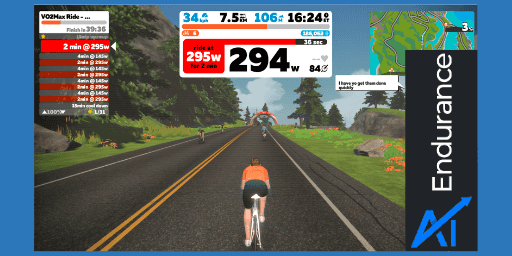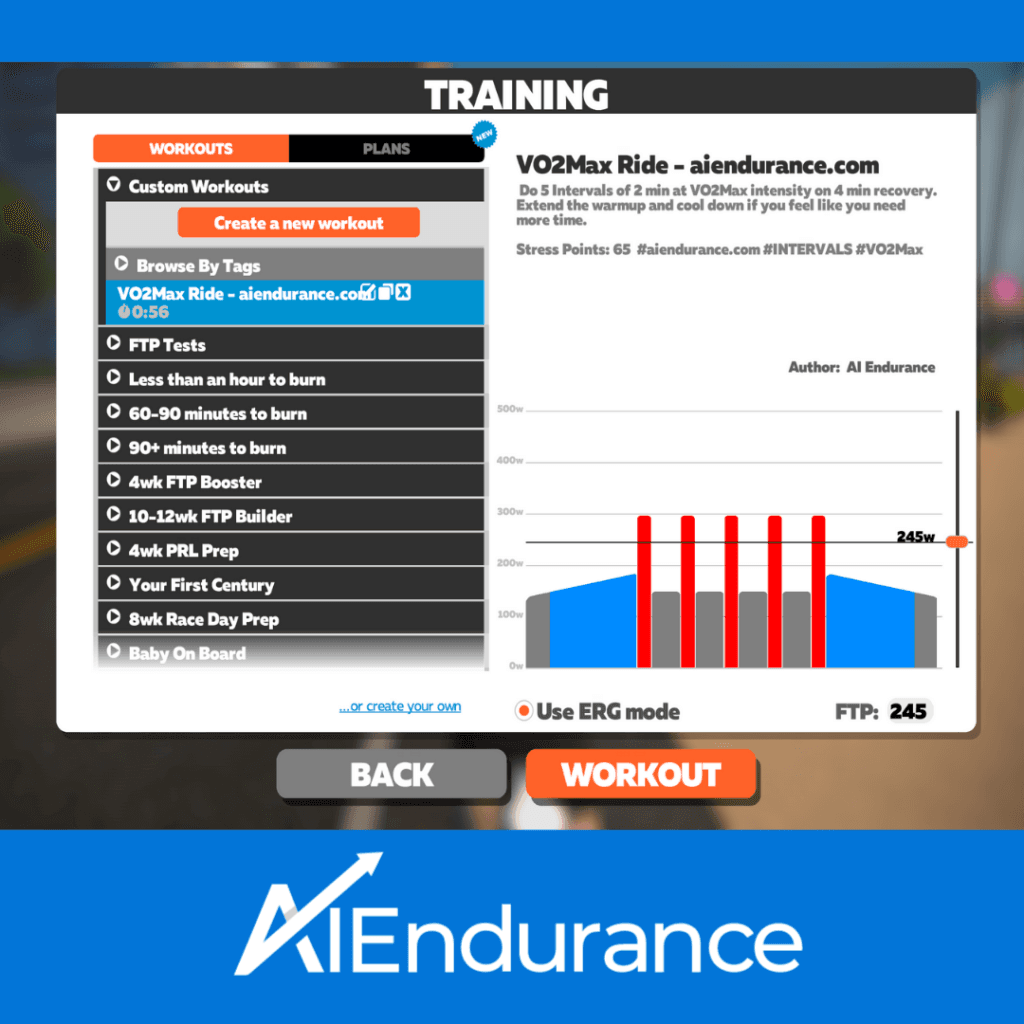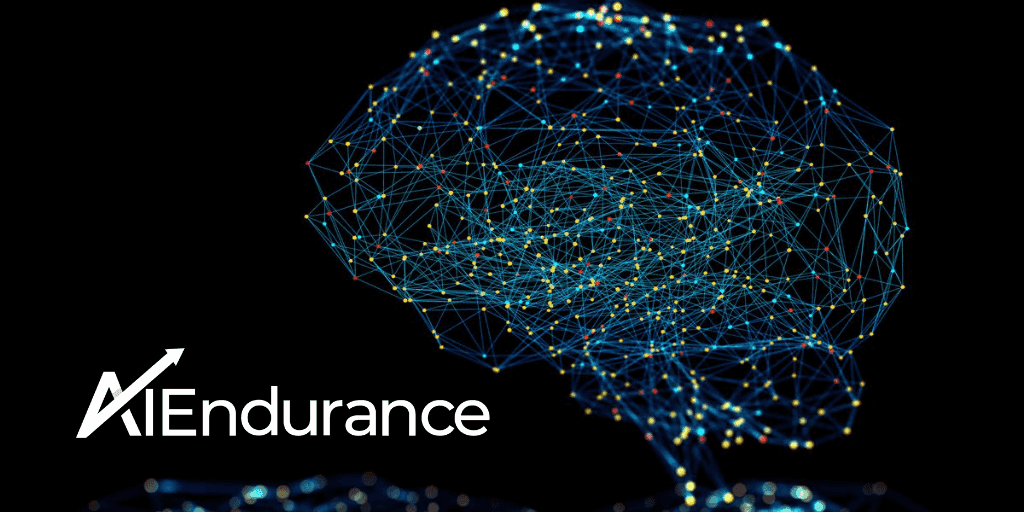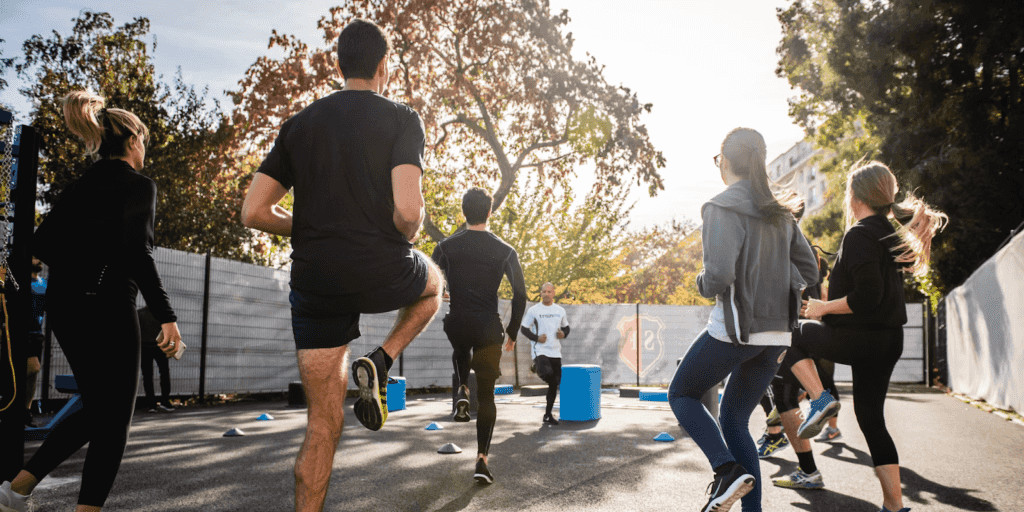
Use Zwift custom workouts to grow your FTP with a data-driven, personalized Zwift custom training plan from AI Endurance.
You can now execute your AI Endurance workouts as Zwift custom workouts by following these simple steps:
In case you are updating your training plan make sure to delete all AI Endurance .zwo files from your old plan in the workout folder prior to uploading your new workouts. Don't delete the file workouts.files as it is Zwift's way of keeping track which workouts were deleted.
For more information on how to use custom workouts in Zwift, see What's on Zwift.

That's it, now you can execute your AI Endurance rides as a Zwift custom workouts training plan.
See also our Zwift running workouts.
You can also get a taste of some our workouts under
AI Endurance is based on the observation that an optimal training routine can be very different for each individual. That's why one-size-fits all training plans often don't yield the expected results.
With AI Endurance you get truly personalized, data-driven training based on your accumulated historic power data. Our machine learning algorithm is like a 'digital twin' that represents how you respond to different training routines. This allows us to
For your optimized, personalized training plan we take into account
You can always make adjustments to your training plan when real life gets in the way.
Sign up today and get your own personalized training plan to reach your goal FTP!

by Grant Paling. In his second of three blog posts, Grant shares his personal experiences with AI in endurance training, emphasizing the blend of AI assistance and human accountability in achieving his personal triathlon goals.

There are different options on the market for optimized AI training plans that are based on applying machine learning to your individual data. In this post, we compare the different options and their features.

Coaching for runners can help you train smarter and reduce injury risk. Here's what you can expect from coaching, how it can help, what you can do to become a better athlete, and the differences between AI and traditional coaching.

by Grant Paling. I’m back. It’s been a few weeks and ultimately, a lot of time to process what happened. If you’ve been following my European Age Group Championship adventures, you will know that the triathlon went well. Very well. But let me give you a deeper insight into the race, the mentality I took into it and then in following blogs I’ll reflect on how that performance was achieved using AI Endurance.